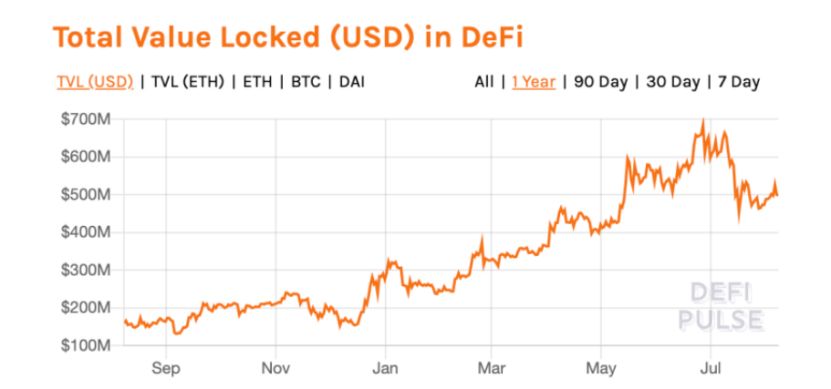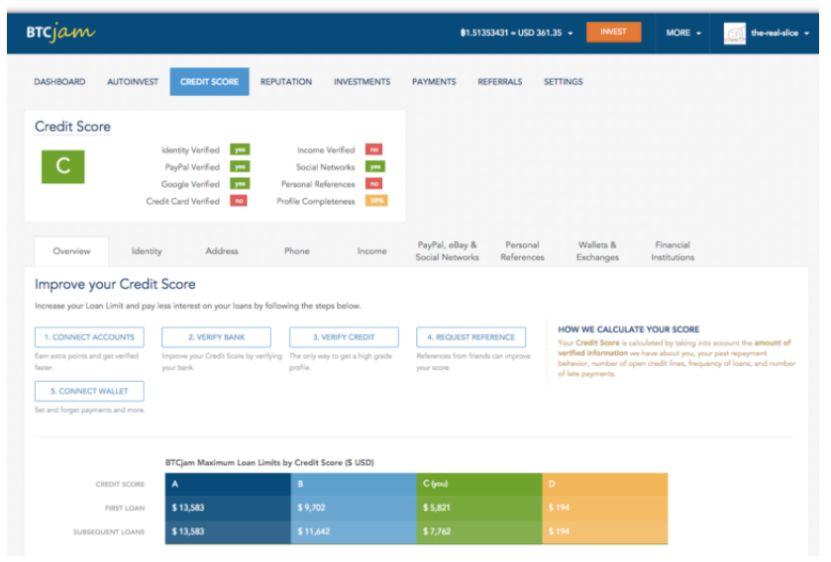Linda Xie: Where is the future of decentralized finance?
DeFi , also known as "open finance," is one of the most interesting areas in the cryptocurrency industry to date. While DeFi creates something that doesn't seem to be much different from many of our existing financial systems (such as loans, loans, derivatives, etc.), at a higher level, it's often more automated and eliminates "middle man." Character.
It is undeniable that DeFi is still in its early stages, and this article hopes to explore the direction of this emerging field, as well as some interesting possibilities.
mortgage
One of the biggest complaints about decentralized finance is that the system always needs over-collateral to get a loan. After all, no one wants to lock their money. In fact, the original intention of designing mortgages is that capital use efficiency is extremely low, and many people do not have additional funds. If you look at the current lock-in funds of the entire industry to reach 500 million US dollars, you can understand why the market has this kind of Needs.
- QKL123 market analysis | Bitcoin and long-term adhesive, the altcoin does not follow the rise (0808)
- Falling Ethereum! After hard bitcoin, the market value has been less than 8%
- Ruibo Community launches petition: destroy half of XRP and save currency price

The purpose of the mortgage is usually for leverage, especially during the bull market.
For example, you can lock a $200 ETH, borrow a $100 DAI, and then you can borrow a $100 ETH with the borrowed DAI. Another purpose of trying to mortgage is that they don't want to sell their own crypto assets, because holding crypto assets involves tax issues, so they may prefer to use their cryptocurrency as collateral to get a loan.
But it's worth noting that we are still in the early stages of DeFi. At this early stage, complaints about overcollateralization were mainly due to the lack of a proper decentralized identity and reputation system in the system. Not only that, but there is no legal system to deal with related issues at this stage, so the only way to make the lender feel "comfortable" is to ask the borrower to over-collateralize.
Whether or not people think that the DeFi system should exist, market demand illustrates everything, and the existing DeFi project is just making it easier for people to accept the service.
If borrowers don't want to sell their own cryptocurrencies, especially if they are excluded from the traditional financial system, there are currently no other options on the market. The same is true for lenders. You can choose not to earn interest on encrypted assets, such as using centralized financial services, which will result in a large fee; or depositing legal money in a bank account, the bank will hold your Money lending, but the vast majority of the interest income they earn will not be given to you.
Therefore, the advantages and disadvantages are very clear. While DeFi still has a long way to go, this emerging field has taken an important step forward for borrowers and lenders. If a better identity and reputation system is introduced in DeFi, the requirements for collateral will be reduced. At present, many banks and other financial departments in the United States rely on credit institutions such as Experian, TransUnion, Equifax, etc. to confirm personal credit.

Combinable
One of the most unique aspects of DeFi is composability.
The DeFi protocol can be inserted into each other like Lego bricks, and then create something new. For example, Dan Elitzer came up with the idea of transferring collateral to a different system called superfluidity.
In fact, there are many platforms on the market that allow users to deposit funds and then lend them according to the highest interest rate of the DeFi protocol (such as MetaMoneyMarket ) , and help users avoid the hassle of self-management. Of course, users can also make some personalized settings. For example, you can set a maximum loan loan ratio in a single agreement, which can reduce the risk of smart contracts, or lend only a list of specific agreements, if the interest rate is lower than a certain percentage, then return the funds, and Or depending on which stable currency mortgage rate is most beneficial between different stable currencies – such as from USDC to DAI.

I believe that encrypted hosting providers are in the best position to provide a centralized version of such services, as funds can be easily locked in by customers.
Many large investors are required to keep funds through qualified custodians because self-regulation is not reliable for some people (or projects) . Managed service providers can offer an option to tokenize managed assets and allow people to trade, which can be another source of revenue for the host. Such as Wrapped Bitcoin (WBTC) is already on the market, but they charge a high price and are one of the obstacles that are difficult to spread in the market.
Moreover, decentralized versions of assets will eventually become popular and coexist with the centralized version of the token assets.
Currently, the vast majority of people using DeFi are native cryptocurrency users, but traditional investors may use DeFi or a system similar to DeFi in the future. Some stable coins actually "borrowed" the concept of DeFi, such as the USDC was loaned out and borrowed on the DeFi platform.
One day in the future, we can imagine that many different kinds of assets can be used for tokens, including stocks, real estate, bonds and other tokens. Traditional investors can use these assets as collateral to obtain leverage and/or loans.
However, these systems will be highly regulated, as traditional investors will not use it without proper regulation. The DeFi we have now is like another form of DeFi, which is more efficient and less expensive than traditional systems, but more regulated than real DeFi.
Although DeFi is very appealing, you must admit that it is risky.
DeFi systems are usually new, and some may only run for a few months, so there is a clear risk of smart contracts. When many smart protocols interact and build new contracts on top of each other, the risk becomes more complicated.
In addition, DeFi has other risks, such as collateral used to support loans. If a collateral (token) price falls very fast (even if it is over-collateralized, it cannot explain the volatility of certain assets) , so that the additional margin can not make up for all the borrowed funds, then there will be a big risk. .
As the volume of transactions continues to increase, the future DeFi industry will certainly introduce more regulation, such as the need for KYC. More regulation may reduce the liquidity of certain projects, and some people who are unable to meet regulatory requirements and are unable to provide appropriate documentation may not be able to access the DeFi system.
Given these risks, people began to discuss whether some of the risks could be hedged by using decentralized insurance.
You can predict and bet on smart contract issues on a deal, and if it does, you can make money, just like Augur (eg decentralized financial insurance defisurance ) . There are also some decentralized insurance programs (such as Nexus Mutual ) that have begun to use their own systems to handle expenses. But it's still important to note that even this approach still has the risk of composite smart contracts, and in some of their separate areas, you need to conduct due diligence, such as governance structure, risk assessment, and claims process. Of course, if the DeFi industry is large enough, traditional insurance companies may offer related products.
Another potential problem is that many DeFi platforms have very low interest rates because people don't know when they should borrow money or lend their money. Interest rate swaps may occur in the future to lock in the premium, but this also increases the complexity of DeFi itself.
Is it meaningful to criticize DeFi? Many of the complaints are precisely because the industry is still in its early stages and it is normal to have problems. We can see that DeFi developers and users have begun to have some obvious competitiveness, and their feedback on individual DeFi projects is more specific, helpful, and more productive.
The chain is authorized by the author of this article to translate and publish the Chinese version.
Author: Linda Xie
Source: Chain smell
We will continue to update Blocking; if you have any questions or suggestions, please contact us!
Was this article helpful?
93 out of 132 found this helpful
Related articles
- Secret: 3 reasons tell you why the BCH price is still lower than the historical highest price of 91%
- Has stolen 7,000 bitcoin coins and was extorted 300 bitcoins
- Buying and holding is a blood loss? The median rate of return on ICO is -87%
- Spinach didn't keep gamblers, DApp didn't see tomorrow…
- The egg left by Nakamoto in the bitcoin source code: 1 or 3 is better than 2
- Put a "fault" on Bitcoin? Developer: Transaction reversal through built-in time delay
- Restore coin security user information disclosure incident: hacker attack hacker?





